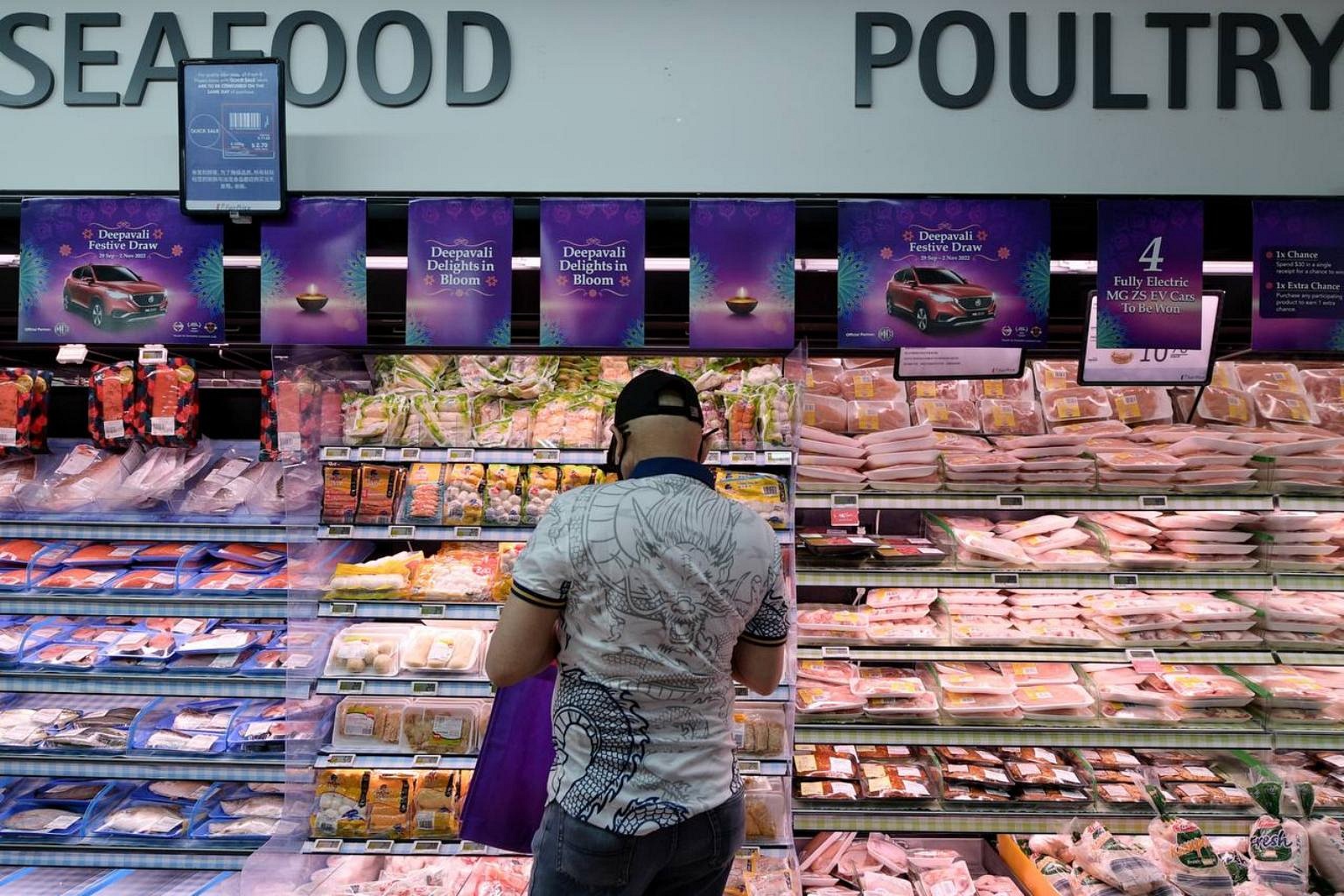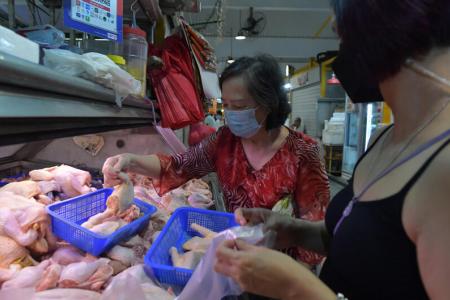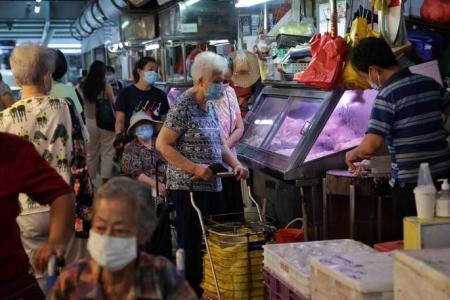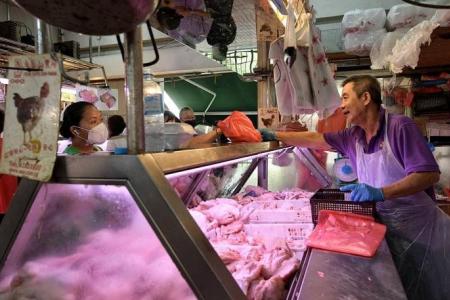Fresh Malaysia chicken fly off shelves despite higher prices
For the past four months, a 75-year-old retired cook, who gave her name only as Ms Rose, had stopped buying chickens because they were too expensive.
But she joined the throngs of people at the Bedok 85 market, and around the island, to buy fresh broiler chickens from Malaysia, after it lifted its export ban on these birds earlier this week.
"I stopped buying chicken because it was more expensive. But since they started selling fresh Malaysian chickens again, I'm buying chicken today for a special occasion. If not I would have gone for pork instead," Ms Rose said.
Almost 4½ months after Malaysia banned the export due to a domestic shortage, the first batch of live Malaysian broiler chickens crossed the Causeway on Thursday morning, with supermarkets receiving the first batch of these chickens later on Thursday afternoon.
Broiler chickens are raised specifically for meat production and bred for optimal health and size. This is the most common type found in supermarkets and makes up the biggest portion of Singapore's chicken imports from Malaysia. They are typically exported to Singapore at around 40 days old.
People have flocked to the wet markets and mini marts in the heartlands on Friday to buy fresh entire chickens or chicken parts from Singapore's northern neighbour, despite the 15 to 35 per cent increase in prices, as compared to that before Malaysia's ban in June, which stemmed from domestic shortage of chickens.
The Straits Times observed healthy crowds at poultry stalls in wet markets in Bedok, Ghim Moh, Serangoon and Toa Payoh, with hawkers expecting to sell out their supply of fresh chickens.
Some, like 48-year-old domestic helper Rowena Valdez, said fresh chickens - while more expensive than before - were still better value for money than kampung ones.
"During the ban, we switched to kampung chicken, but they are usually smaller, have less meat and are more expensive than fresh chicken," said Ms Valdez, who bought an entire chicken at the Toa Payoh Lorong 1 market.
"A whole fresh chicken now costs around $16, but they are bigger and more worth it."
In contrast, a kampung chicken, which is typically smaller, would cost about $12.
Mr Vincent Liow, the co-owner of Ken & Vin Fresh Poultry at Ghim Moh Road Market and Food Centre said that most of his fresh chicken stock was already running out when ST visited at 8am, owing to pre-orders from his customers.
The 47-year-old said: "The birds used to cost me around $4 per kg but now it's close to $7 so I've had to raise my price from $6 per kg to $8. But most of the fresh chicken and its parts are already gone."

Mr Peter Toh, who runs a neighbouring stall in Ghim Moh market, said he received only about half the 100 chickens he ordered from his supplier on Friday.
"I had people coming to buy at 4am soon after I opened my stall. Most people coming today have chosen to buy only the fresh chicken or parts," the 52-year-old said.
But it was not all cheers for the poultry hawkers, as the return of the higher-priced fresh chicken has resulted in lower demand for other types of chicken, and also are cutting into their profit margins.
Mr Toh said that his profits may be impacted if his supply of fresh chickens are not increased in the longer term.
He said: "I used to get 100 fresh chickens every day which would cost $4.50 per kg. Selling them at $6 meant I had a profit margin of $1.50 for each kg I sold. Even though I sell it at $8 per kg, it costs me $6.80 per kg, so my profit margin is lower."

He added that with the return of fresh chicken stocks, the demand for kampung chicken would likely drop.
"People only buy it when there's no fresh chicken, there were some who came today that walked off after I told them we were only left with kampung chicken parts," said Mr Toh.
Adding to the hawkers' dilemma is the fact that Singapore would get only about 1.8 million chickens per month, half the 3.6 million chickens imported before the ban.
On top of that, consumers like Mr Kevin Ho may stop buying chicken if the prices remain high.
The 50-year-old said: "I will start to monitor next week if the prices would come down. If the prices don't come down, I would probably eat less chicken."
Get The New Paper on your phone with the free TNP app. Download from the Apple App Store or Google Play Store now




